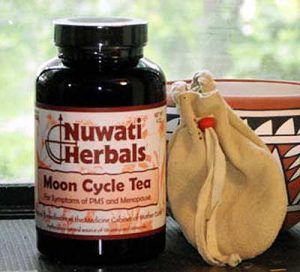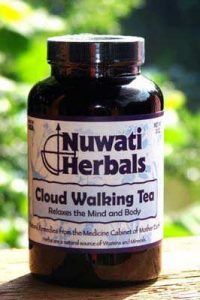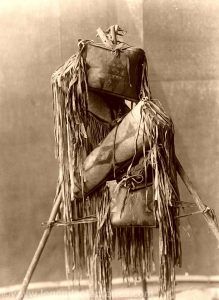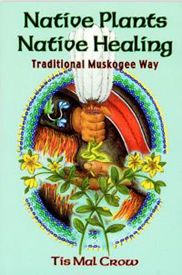Remedies Home A B C D E F G H I J K L M N O P Q R S T U V W X Y Z
N
Nausea:
- Chamomile – Commonly used in teas it is best known to help with sleep.
- Feverwort – Used internally and externally in herbal medicine.
- Ginger Root – Utilized as both a spice and medicine throughout the world.
- Horehound – Whole plant used internally and externally. People with gastritis or peptic ulcer disorders should use it cautiously.
- Peppermint – In addition to flavoring, long used in traditional medicine for its calming and numbing effects. It should not be used or given to infants or small children.
- Raspberry – Leaves and fruits used in various medical issues.
- Rooibos – Used in teas to help with various conditions.
- Spearmint – Teas, poultices, and oils used internally and externally for several remedies.
- Star Anise – The fruit of a small tree with a licorice-like flavor long used in medical remedies.
Nervous Conditions:
- Ashwagandha – The whole plant is used in numerous remedies. Caution is advised in the use of this plant since it is toxic.
- Black Cohosh – Roots of the plant were used in teas for various ailments.
- Buck Brush – Applies to several North American shrubs used in herbal medicine.
- Catnip – Stems and leaves make an aromatic tea which is useful for many conditions.
- Chamomile – Commonly used in teas it is best known to help with sleep.
- Damiana – Used internally for various medical issues.
- Eastern Skunk Cabbage – Dried leaves used as seasoning, in remedies, and as a magical talisman by various tribes.
- Feverwort – Used internally and externally in herbal medicine.
- Oat Straw – food source and medical remedy since prehistoric times.
- Rooibos – Used in teas to help with various conditions.
- Skullcap – A powerful medicinal herb, it was cultivated Native Americans for use in several remedies. Pregnant women should not take Skullcap.
- Wild Ginger – Native Americans used the roots as a seasoning and medicinal herb.
- Wild Lettuce – Indigenous to North American, it was used for sedative purposes, especially in nervous complaints.
Nervous System:
- Ginsing – Numerous specifies throughout the world have been used for thousands of years in medical remedies.
- Guarana – Containing caffeine, it has many of the same effects as coffee.
- Lecithin – Found in several plants, it benefits various body systems.
- Rosemary – Used for culinary purposes and in medicinal remedies.
- Schisandra – A genus of shrub that has many medicinal uses.
- Wild Rose – There are hundreds of species that have been used medicinally for thousands of years.
- White Pine – The inner bark, young shoots, twigs, pitch, and leaves have long been used by Native Americans in medical remedies.
- Yerba Mate – A species of Holly that has a long history as a medicinal herb.
Night Sweats:
- Elder – Ripe elderberries used as both food and in medicinal remedies.
- Black Cohosh – Roots of the plant were used in teas for various ailments.
Nosebleed:
- Buck Brush – Applies to several North American shrubs used in herbal medicine.
- Cardinal Flower – Roots, leaf tea and poultices were used internally and externally.
- Shavegrass – Used for centuries as a remedy for various medical conditions.
- Yarrow – Used for thousands of years, especially to stop bleeding.
Numbing Agent:
- Devil’s Claw – Used in teas and tonics internally and in poultices externally. It should not be used by woman who are or may be pregnant.
P
Pain:
- Allspice – Dried unripe berries have long been used teas.
- Black Cohosh – Roots of the plant were used in teas for various ailments.
- Bloodroot – Primarily used as a medicine for respiratory and digestive problems, it also used externally. Today, we know it is toxic and the FDA has classified it as unsafe.
- Chokecherry – Used as a source of food and medicine, it was considered one of the most important herbs in Native American medicine.
- Dong Quai – Used for over a thousand years to treat several conditions.
- Evening Primrose – Used for both food and in medicinal remedies, decoctions were used for internal and external ailments.
- Greenbriar – Teas and salves used internally and externally.
- Kava – Used there for thousands of years as a folk remedy and as a social and ceremonial beverage.
- Lavender – Dating back to Roman times, Lavender has been used in teas, balms, food, and medicinal remedies.
- Osha – Having a wide variety of medicinal properties, Osha was highly valued by Native Americans.
- Pau d’arco – Long used for a wide range conditions.
- Pleurisy Root – Long been found to be effective for many respiratory disorders.
- Poke – Though parts of this plant are highly toxic to livestock and humans, it has long been used as food and medicine by Native Americans.
- Saltbush – Many species used for various conditions.
- Sarsaparilla – Used for centuries in a wide variety of medicinal remedies.
- Skullcap – A powerful medicinal herb, it was cultivated Native Americans for use in several remedies. Pregnant women should not take Skullcap.
- Tobacco – Long been important in Native American culture for social, religious, ceremonial purposes as well as in medicinal remedies.
- Willow – The leaves and bark of the willow tree have been used since times of ancient Egypt and Greece.
Pancreas Troubles:
- Devil’s Claw – Used in teas and tonics internally and in poultices externally. It should not be used by woman who are or may be pregnant.
- Uva Ursi – Used medicinally since the second century. Pregnant women should not use it.
Parkinson’s Disease:
- Green Tea – Made solely with the leaves of Camellia Sinensis, it is known for its many helpful properties.
Pesticide:
- Pennyroyal – Long used to treat medical problems and to eradicate pests. Pennyroyal should not be used in any way by pregnant women. Over-ingestion of this herb has caused death.
Pleurisy:
- Feverwort – Used internally and externally in herbal medicine.
- Pleurisy Root – It has long been found to be effective for many respiratory disorders.

Nuwati Herbals Moon Cycle Tea for PMS, menstrual, menopause, and other female needs. Available at Legends’ General Store.
PMS:
- Bee Pollen – One of the oldest health foods used by man, it is mixed with food or drinks or as a pill supplement today.
- Black Cohosh – Roots of the plant were used in teas for various ailments.
- Cat’s Claw – Used in teas and tonics for over 2,000 years.
- Chamomile – Commonly used in teas, it is best known to help with sleep.
- Chasteberry – Berries and flowers used in teas. Pregnant or breastfeeding women should not take chasteberry.
- Dong Quai – Used for over a thousand years to treat several conditions.
- Hibiscus – Various species used in traditional herbal medicines dating back to Roman times.
- Skullcap – A powerful medicinal herb, it was cultivated by Native Americans for use in several remedies. Pregnant women should not take Skullcap.
Pneumonia:
- Dogwood – Bark, berries, and twigs used in decoctions internally and externally.
- Honeysuckle – Used in traditional herbal remedies for thousands of years.
- Pleurisy Root – It has long been found to be effective for many respiratory disorders.
- Rabbit Tobacco – Was thought to have had spiritual or mystic powers by many Indians.
- White Pine – The inner bark, young shoots, twigs, pitch, and leaves have long been used by Native Americans in medical remedies.
- Wild Black Cherry – The dried inner bark was traditionally used in tea or syrups for several health problems.
Poison Antidote:
- Tobacco – Long been important in Native American culture for social, religious, and ceremonial purposes and medicinal remedies.
Poison Ivy, Oak, Sumac, etc.
- Plantain – Considered to be one of the nine sacred herbs by the ancient Saxon people and has a long history of use as an alternative medicine dating back to ancient times.
- Sumac – Viewed by some tribes as a sacred plant, Sumac was used for food and medicine.
- Witch Hazel – Widely used for medicinal purposes by American Indians.
Prostate Conditions:
- Cat’s Claw – Used in teas and tonics for over 2,000 years.
- Pau d’arco – Long used for various conditions.
- Prickly Pear Cactus – Native Americans used the younger pads for food and in teas; while mature pads were used in poultices.
- Saw Palmetto – Long prized as a food product, it was also used by Native Americans to make baskets and fans, as well as in medicinal remedies.
- Shavegrass – Used for centuries as a remedy for various medical conditions.
- Uva Ursi – Used medicinally since the second century. Pregnant women should not use it.
Psoriasis:
- Burdock – Roots and leaves utilized internally and externally. Avoid if pregnant or nursing.
- Marshmallow Root – Dating back thousands of years, this root has been used as food and medicine.
- Red Clover – Traditionally used for several conditions.
- Witch Hazel – Widely used for medicinal purposes by American Indians.
Purgative:
- Poke – Though parts of this plant are highly toxic to livestock and humans, it has long been used as food and medicine by Native Americans.
R
Reproductive System:
- Ashwagandha – The whole plant is used in numerous remedies. Caution is advised in the use of this plant since it is toxic.
- Bee Pollen – One of the oldest health foods used by man, it is mixed with food or drinks, or as a pill supplement today.
- Blue Cohosh – Root is used in teas and tonics.
- Jiaogulan – Known for its many health-giving qualities and anti-aging effects.
- Lecithin – Found in several plants, it benefits various body systems.
- Skullcap – A powerful medicinal herb, it was cultivated Native Americans for use in several remedies. Pregnant women should not take Skullcap.
- Wild Black Cherry – The dried inner bark was traditionally used in tea or syrups for several health problems.
- Wild Rose – There are hundreds of species that have been used medicinally for thousands of years.
Respiratory Problems:
- Black Cohosh – Roots of the plant were used in teas for various ailments.
- Bloodroot – Primarily used as a medicine for respiratory and digestive problems, it also used externally. Today, we know it is toxic and the FDA has classified it as unsafe.
- Broom Snakeweed – Roots and leaves used in steam therapies, teas, and poultices.
- Cat’s Claw – Used in teas and tonics for over 2,000 years.
- Chokecherry – Used as a source of food and medicine, it was considered one of the most important herbs in Native American medicine.
- Eastern Skunk Cabbage – Dried leaves used as seasoning, in remedies, and as a magical talisman by various tribes.
- Echinacea – Roots were chewed, dried in tea, or pulverized for external use.
- Fennel – Seeds, leaves, and roots used in cooking and medicinal remedies.
- Fenugreek – Used internally and externally for various medicinal purposes.
- Hibiscus – Various species used in traditional herbal medicines dating back to Roman times.
- Honeysuckle – Used in traditional herbal remedies for thousands of years.
- Marshmallow Root – Dating back thousands of years, this root has been used as food and medicine.
- Mint – Dried leaves used in teas and food, found helpful in several remedies.
- Mullein – A tobacco-like plant and one of the oldest herbs, it has a long history of use as a medicine.
- Osha – Having a wide variety of medicinal properties, Osha was highly valued by Native Americans.
- Pleurisy Root – Long been found to be effective for many respiratory disorders.
- Saw Palmetto – Long prized as a food product, it was also used by Native Americans to make baskets and fans, as well as in medicinal remedies.
- Red Clover – Traditionally used for several conditions.
- Schisandra – A genus of shrub that has many medicinal uses.
- Slippery Elm – The tree had many traditional uses by Native Americans.
- Wild Garlic – Used throughout its history for both culinary and medicinal purposes.
- Wild Onion – Traditionally used as food and medicine.
- Yarrow – Used for thousands of years, especially to stop bleeding.
- Yellow Dock – Native Americans as a traditional medicine and food.

Nuwati Herbals Cloud Walking Tea – Calm mind, body, relieve anxiety, restful sleep, and more. Available at Legends’ General Store
Restlessness including restless legs syndrome and restless sleep:
- Catnip – Stems and leaves make an aromatic tea which is useful for many conditions.
- Chamomile – Commonly used in teas it is best known to help with sleep.
- Hops – Though most commonly known for its use in beer, it also has medicinal properties.
- Skullcap – A powerful medicinal herb, it was cultivated Native Americans for use in several remedies. Pregnant women should not take Skullcap.
- Valerian Root – Has been used as a medicinal herb since at least the time of ancient Greece and Rome.
Rheumatism:
- Ashwagandha – The whole plant is used in numerous remedies. Caution is advised in the use of this plant since it is toxic.
- Black Cohosh – Roots of the plant were used in teas for various ailments.
- Blue Cohosh – Root is used in teas and tonics.
- Bloodroot – Primarily used as a medicine for respiratory and digestive problems, it also used externally. Today, we know it is toxic and the FDA has classified it as unsafe.
- Boswellia – Fragrant resin utilized in various ailments. It should not be used by pregnant, breastfeeding women and children.
- Broom Snakeweed – Roots and leaves used in steam therapies, teas, and poultices.
- Burdock – Roots and leaves utilized internally and externally. Avoid if pregnant or nursing.
- Cardinal Flower – Roots, leaf tea and poultices were used internally and externally.
- Cat’s Claw – Used in teas and tonics for over 2,000 years.
- Eastern Skunk Cabbage – Dried leaves used as seasoning, in remedies, and as a magical talisman by various tribes.
- Garcinia Cambogia – Fruit rind used in various remedies. Not recommended for those with diabetes, people suffering any dementia syndrome, or pregnant and lactating women.
- Ginger Root – Utilized as both a spice and medicine throughout the world.
- Greenbriar – Teas and salves used internally and externally.
- Indian Hemp – A type of marijuana it was used to make clothes, rope, and paper as well as boiling the roots into teas for medicinal problems.
- Indian Paintbrush – Used for several purposes these plants are potentially toxic if the roots or green parts are consumed.
- Juniper – Used internally and externally for medicinal purposes. Pregnant women should not use this herb as it has been known to cause miscarriage.
- Osha – Having a wide variety of medicinal properties, Osha was highly valued by Native Americans.
- Plantain – Considered to be one of the nine sacred herbs by the ancient Saxon people and has a long history of use as an alternative medicine dating back to ancient times.
- Poke – Though parts of this plant are highly toxic to livestock and humans, it has long been used as food and medicine by Native Americans.
- Sarsaparilla – Used for centuries in a wide variety of medicinal remedies.
- Senna – A large genus of flowering plants found to be helpful in many remedies.
- Spearmint – Teas, poultices, and oils used internally and externally for several remedies.
- Star Anise – The fruit of a small tree with a licorice-like flavor long used in medicinal remedies.
- Sweetflag – Has a long history of medicinal use in many herbal traditions.
- White Pine – The inner bark, young shoots, twigs, pitch, and leaves have long been used by Native Americans in medicinal remedies.
- Wild Rose – There are hundreds of species that have been used medicinally for thousands of years.
- Wild Yam – Traditionally used as food and medicine.
Rheumatoid Arthritis:
- Black Cohosh – Roots of the plant were used in teas for various ailments.
- Burdock – Roots and leaves utilized internally and externally. Avoid if pregnant or nursing.
- Dong Quai – Used for over a thousand years to treat several conditions.Devil’s Claw – Used in teas and tonics internally and in poultices externally. It should not be used by woman who are or may be pregnant.
- Honeysuckle – Used in traditional herbal remedies for thousands of years.
Ringing in Ears (Tinnitus):
- Black Cohosh – Roots of the plant were used in teas for various ailments.
Ringworm:
- Bloodroot – Primarily used as a medicine for respiratory and digestive problems, it also used externally. Today, we know it is toxic and the FDA has classified it as unsafe.
- Boswellia – Fragrant resin utilized in various ailments. It should not be used by pregnant, breastfeeding women and children.
- Milkweed – Though it can be toxic if not prepared properly, Milkweed was used as food and medicine, as well as in making cords, ropes, and coarse cloth. Warning: Milkweed may be toxic when taken internally, without sufficient preparation.
- Oak – Acorns and bark used for various medical ailments.
- Yellow Dock – Native Americans as a traditional medicine and food.
Disclaimer: These statements have not been evaluated by the Food and Drug Administration and we make no medical claims, nor intend to diagnose, treat, or heal medical conditions. Women who are pregnant or nursing, or persons with known medical conditions should consult their physician before taking any herbal products.
Remedies Home A B C D E F G H I J K L M N O P Q R S T U V W X Y Z


